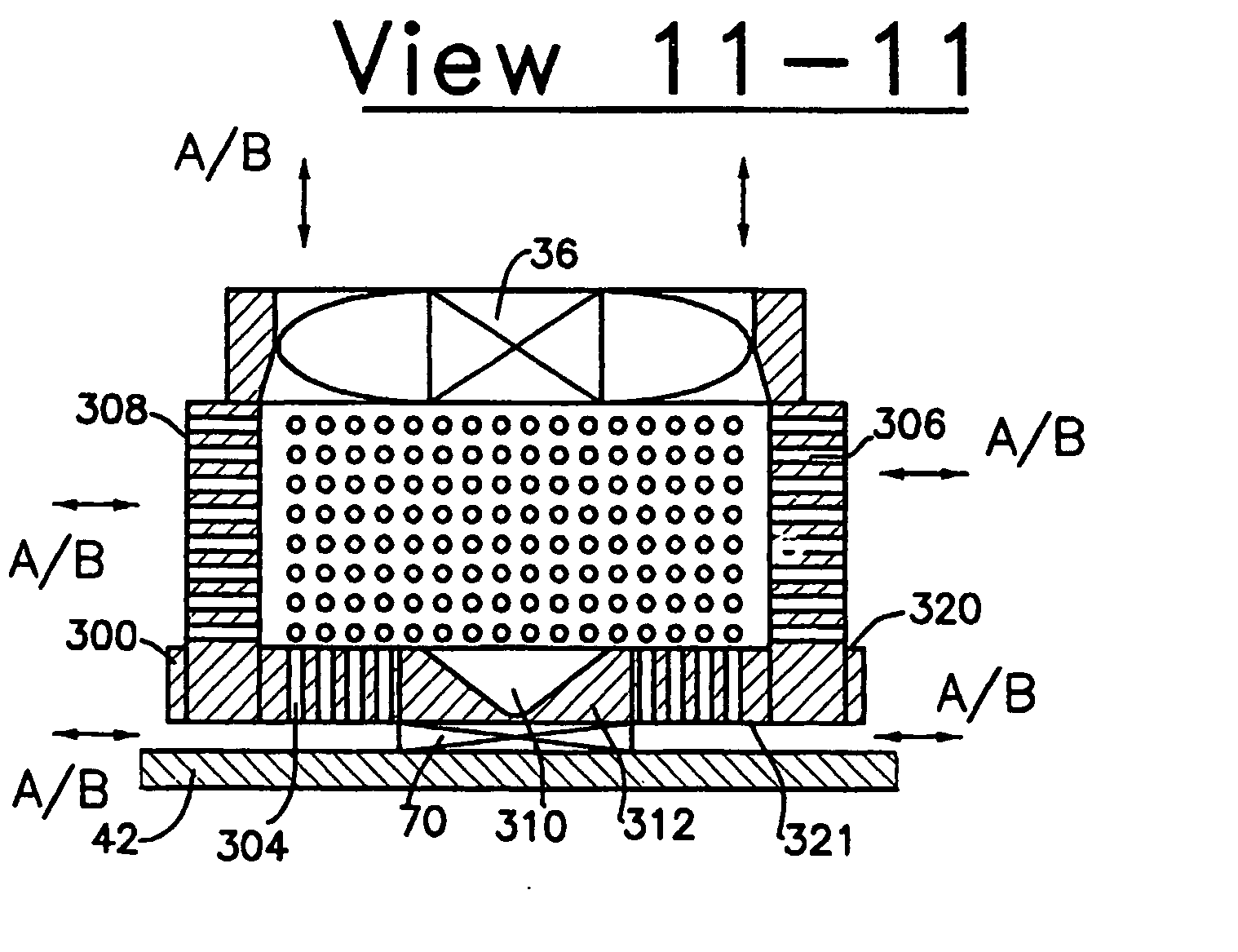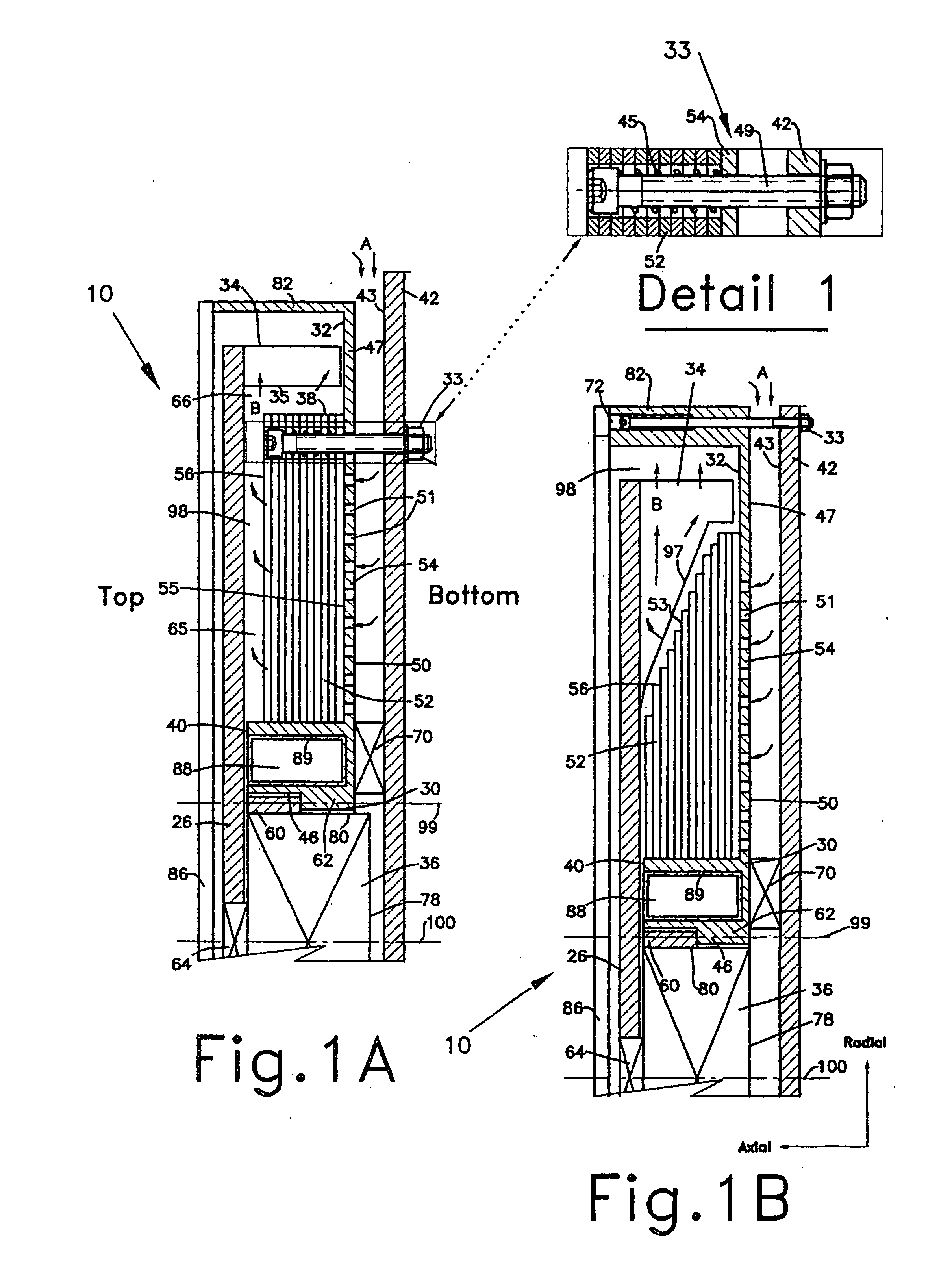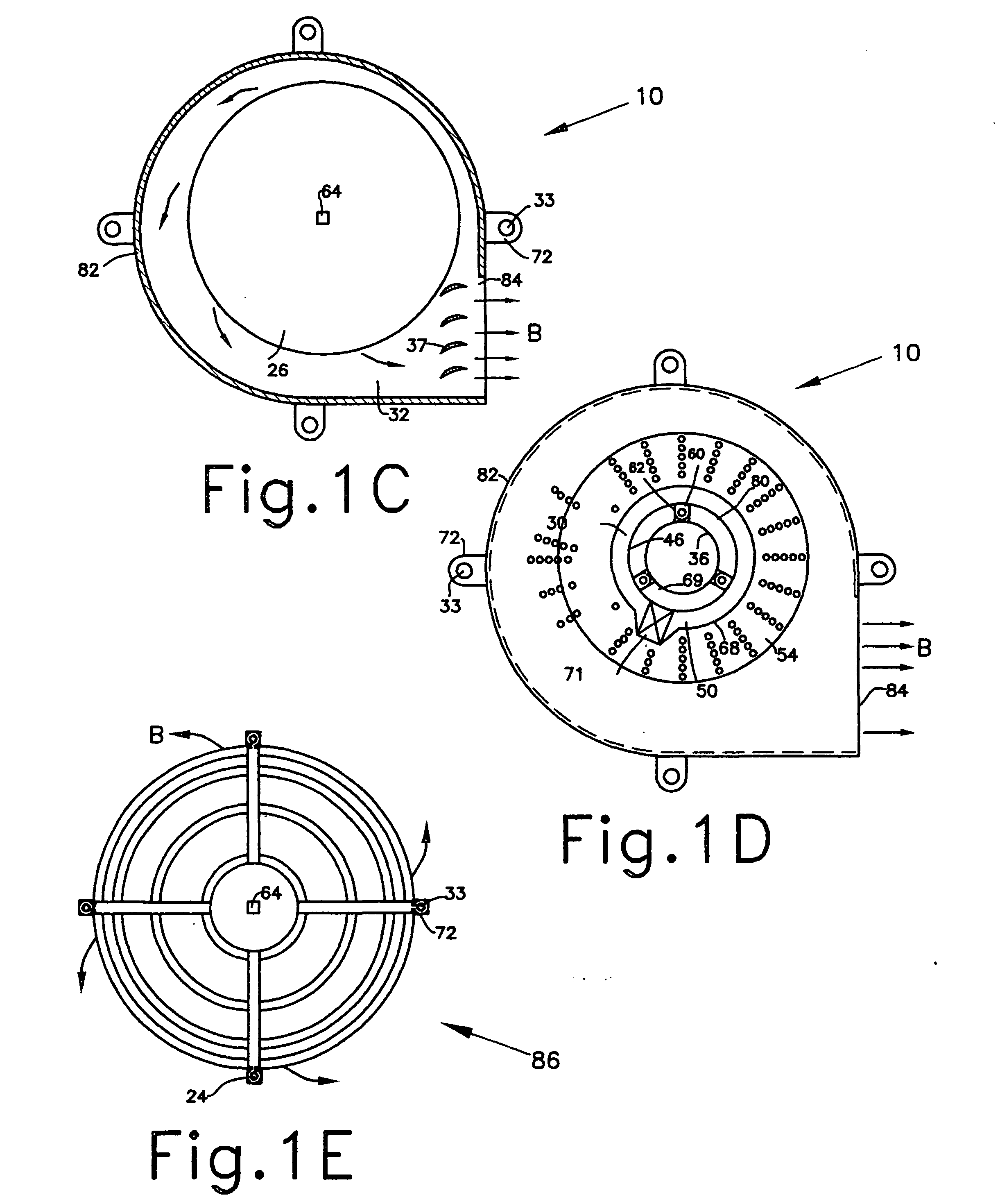Heat-sink with large fins-to-air contact area
a heatsink and finstoair technology, which is applied in the direction of cooling/ventilation/heating modification, electrical equipment, lighting and heating apparatus, etc., can solve the problems of high-power components such as microprocessors, which cannot economically be cooled by a cooling device, damage to the pcb and the processor, and the pressure, which can be developed by such an embedded fan, etc., to achieve minimal axial thickness, reduce the distance between adjacent pcbs
- Summary
- Abstract
- Description
- Claims
- Application Information
AI Technical Summary
Benefits of technology
Problems solved by technology
Method used
Image
Examples
Embodiment Construction
[0060] With current technology, mass manufacturing of a heat-sink of up to 40 mm axial height, densely populated by through-perforations of less than 12 mm-square footprint area, is most economical by utilizing any of the combination of stacked perforated and / or indented plates hereinafter described. Notwithstanding, the present invention is not limited to embodiments composed of stacked perforated and / or indented plates, but, can be made of any commonly used material as is known to those skilled in the art. For example, a heat-sink may be made of a solid and relatively thick perforated graphite block, wherein due to the softness of the material, it can be densely perforated or fine-blanked by utilizing currently available high output perforating or fine-blanking processes.
[0061] Extruded perforated tubing can also be considered, providing the perforations are sufficiently small to provide the equal surface area as in the perforated stacked plates of a preferred embodiment of the i...
PUM
 Login to View More
Login to View More Abstract
Description
Claims
Application Information
 Login to View More
Login to View More - R&D
- Intellectual Property
- Life Sciences
- Materials
- Tech Scout
- Unparalleled Data Quality
- Higher Quality Content
- 60% Fewer Hallucinations
Browse by: Latest US Patents, China's latest patents, Technical Efficacy Thesaurus, Application Domain, Technology Topic, Popular Technical Reports.
© 2025 PatSnap. All rights reserved.Legal|Privacy policy|Modern Slavery Act Transparency Statement|Sitemap|About US| Contact US: help@patsnap.com



